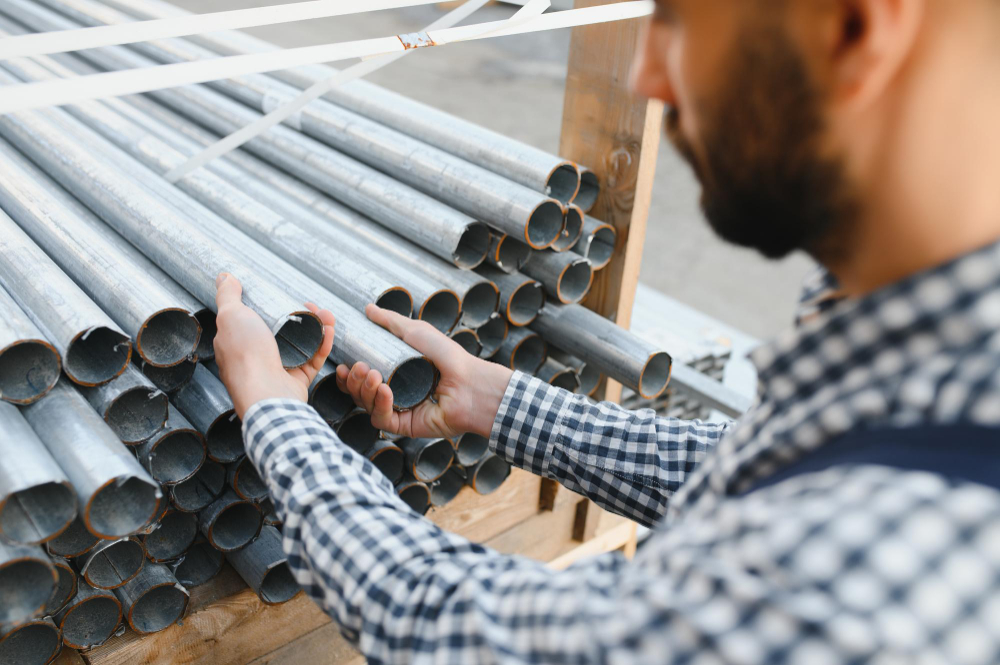In manufacturing, ensuring top-notch quality is crucial for safe and dependable structures. Imagine constructing a building without a strong foundation – it’s bound to crumble. That’s where the meticulous process of quality control steps in, guiding every step of crafting sturdy structures in structural steel fabrication. From precise blueprints to skilled workers, it’s the dedication to perfection that ensures the safety of the things we build.
In this article, we’ll explore the vital elements that define the quality of the materials we use, ensuring that the structures we create are robust and reliable. So, let’s dive into the core of this quality control process and discover how it shapes the final products we rely on daily.

Raising The Curtain On Fabrication Quality Control
Quality control in structural steel fabrication is a systematic approach to ensuring that the products meet predetermined standards of quality, safety and performance. It is not merely a final checkpoint but an ongoing process that begins at the inception of a project and continues throughout. Inspectors, engineers and other specialists work together to check for defects, inaccuracies or inconsistencies at various stages of the fabrication process.
The Triad of Quality- Personnel, Designs And Drawings
People are the backbone of any manufacturing process, and structural steel fabrication is no exception. Qualified engineers and skilled workers are vital for maintaining quality control. They are responsible for interpreting drawings and designs accurately, carrying out the necessary processes and ensuring the final product meets the designated standards.
Drawings and designs serve as the blueprints. They guide the personnel through every cut, weld and assembly. Therefore, they must be accurate, detailed and aligned with industry standards. Any discrepancy in these drawings can lead to costly mistakes, compromising the quality and safety of the end product.
Navigating The Waters Of Structural Steel Fabrication Procedures
In structural steel fabrication, the actual procedures of cutting, bending and assembling metals are critical points for quality control. Laser cutting, plasma cutting and welding are commonly employed, each with quality parameters to maintain. For instance, incorrect welding temperatures can weaken the metal, making it susceptible to cracks and reducing its load-bearing capacity.
The Foundation Of Quality In Material Selection
Choosing the right material is the cornerstone of quality control in structural steel fabrication. While steel is the primary material, its various alloys offer different properties like tensile strength, corrosion resistance and malleability. Therefore, the choice of material should align with the functional requirements of the final product. Any mistake here can lead to significant repercussions, including structural failure in extreme cases.
The Role Of Advanced Technologies In Ensuring Quality
In today’s digital age, advanced technologies like computer-aided design (CAD) and computer numerical control (CNC) machining have revolutionized quality control and ineffective structural steel fabrication. CAD software allows for intricate and precise designs, minimizing human error in the initial stages of a project. CNC machining ensures these designs are executed to perfection, with machine-led processes offering a higher degree of accuracy than traditional methods. These technologies work in tandem to uphold quality standards, making them indispensable tools in modern structural steel fabrication.
Inspection Protocols Is More Than Just A Final Glance
Inspection is often the last line of defense in ensuring quality but is not the least important. In structural steel fabrication, inspections are conducted at multiple phases—post-design, during fabrication and post-fabrication. These inspections are carried out by certified professionals using sophisticated tools to measure parameters like dimensions, tensile strength and weld quality. Such thorough checks are pivotal in preempting issues compromising the final product’s structural integrity.
The Stringent Standards Guiding Quality Control
When it comes to structural steel fabrication, adhering to industry standards is not optional; it’s mandatory. Organizations like the American Institute of Steel Construction (AISC) and the American Welding Society (AWS) set these benchmarks. They offer guidelines on everything from material selection to welding procedures and adherence to these standards is often verified through third-party audits. These rigorous standards act as a roadmap for quality control, helping manufacturers maintain a consistent level of quality across projects.
Your Blueprint To Superior Steel Fabrication
Are you ready to elevate your steel fabrication projects to the next level? At Bigfoot Pipe & Piling, we’re committed to delivering unparalleled quality and reliability. Join us in the pursuit of excellence and experience the difference. Let’s build a brighter future together – one sturdy structure at a time. Contact us today and take the first step toward structural steel fabrication solutions. Your success begins with us.
